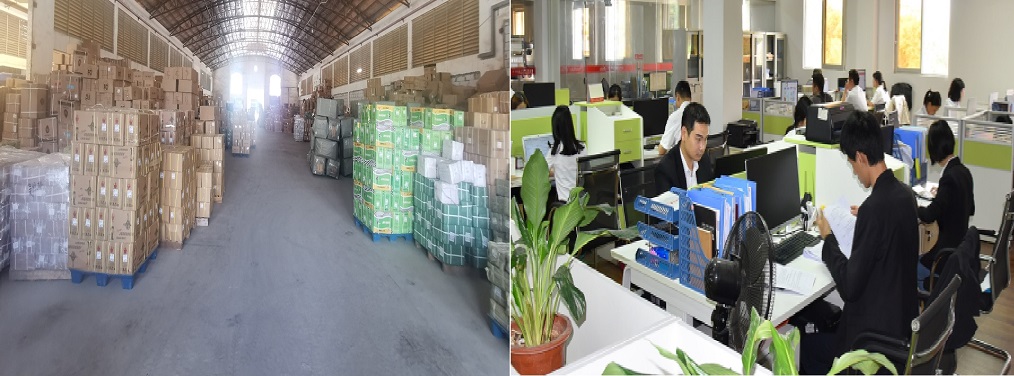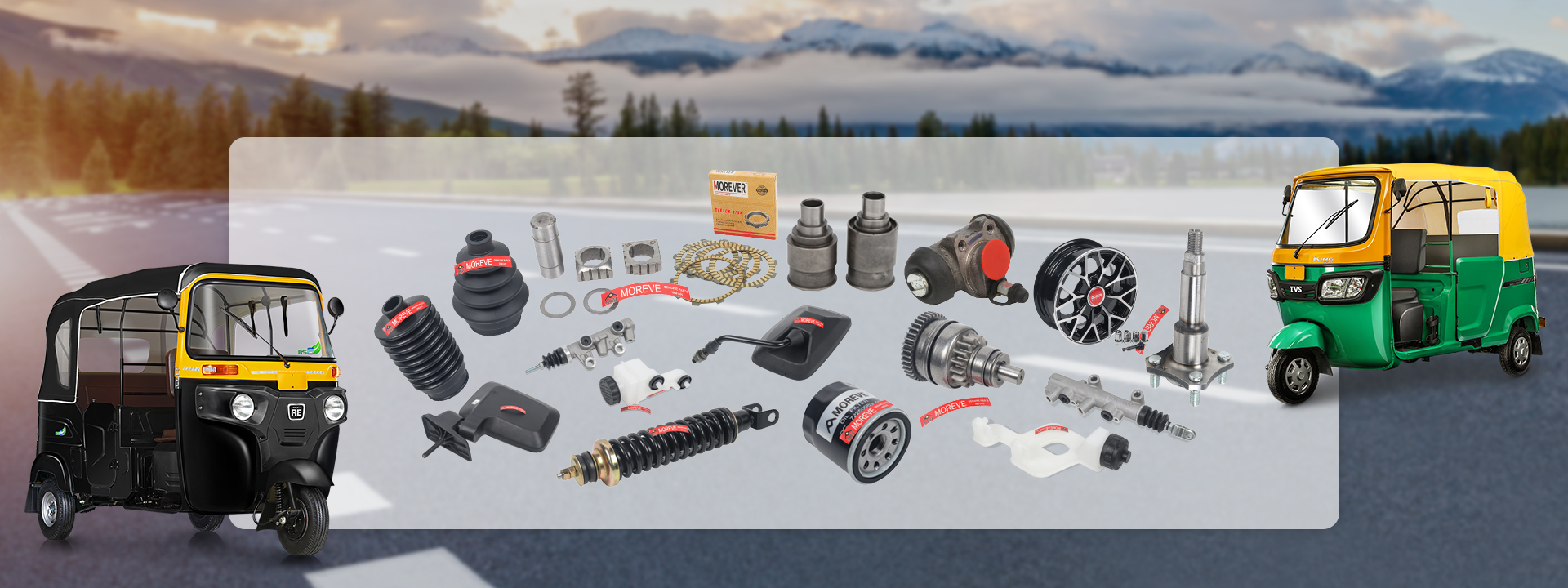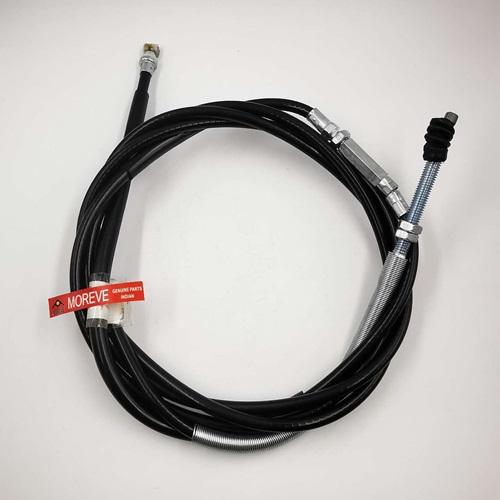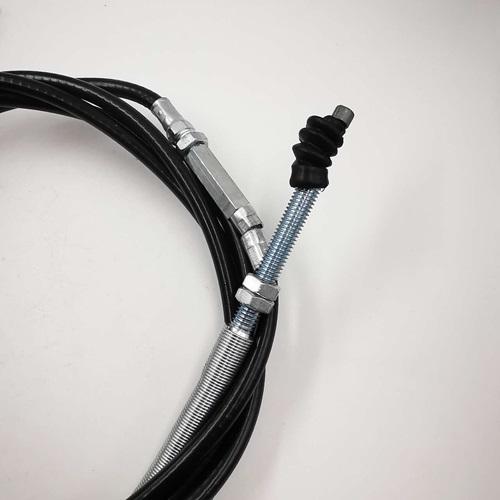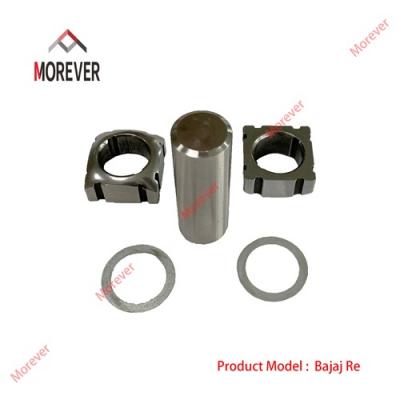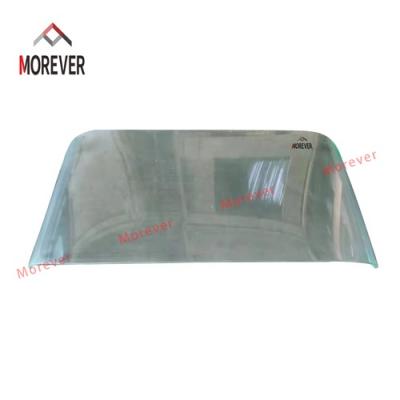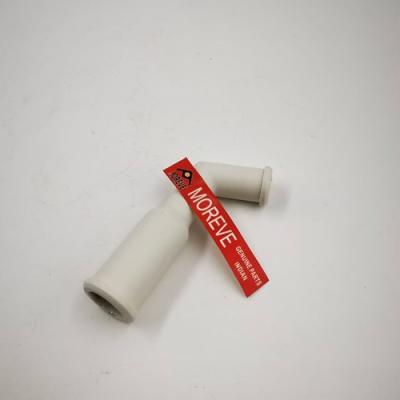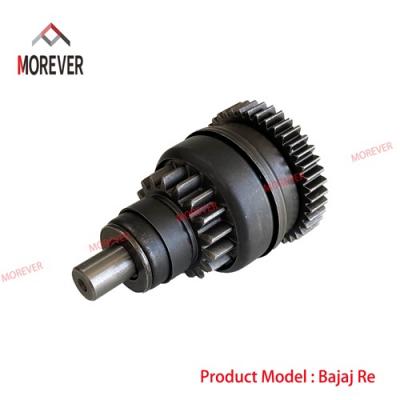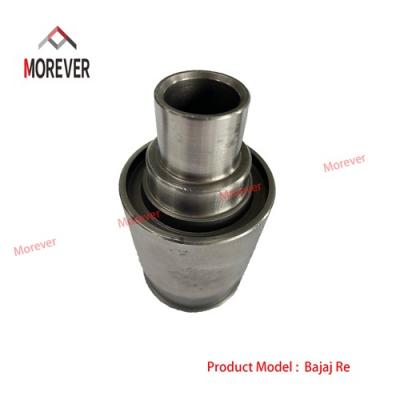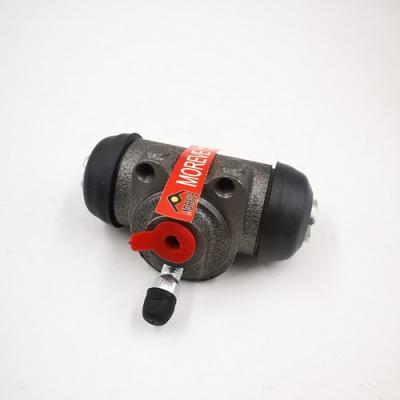Name: Clutch cable
Model: Bajaj Re BS-4
Quality: A plus
Warranty: 3 Months
Delivery: 30 days
Package: Rubber Bags
Main components and quality control of Bajaj clutch cable
1. Main parts of the clutch cable
Wire rope (inner core)
Usually made of multiple strands of high-carbon steel wire or stainless steel wire, high strength and wear resistance are required.
High-quality products will be PTFE (Teflon) coated or greased to reduce friction1216.
Outer protective sleeve (protective tube)
Material: oil-resistant rubber, polyurethane (PU) or nylon braided layer, which must have anti-aging and crack resistance.
Inferior products may use cheap PVC, which is easy to harden and crack1416.
Metal joints
Including riveted/welded joints at the handle end and the engine end, usually made of zinc alloy or steel, which must be firm and not loose12.
Adjustment mechanism
Includes adjustment nut and locking nut, used to adjust the clutch free travel (usually 10-20mm)1415.
2. Key points of quality control
1. Raw material control
Wire rope: must meet the tensile strength standard (such as ≥1500MPa) and be rust-proofed (stainless steel or galvanized).
Outer protective cover: oil resistance test (no expansion after immersion in gear oil for 24 hours), weather resistance test (UV aging test)16.
2. Production process control
Wire rope twisting: ensure tightness without looseness to avoid "loose strands" during use.
Joint riveting/welding: tensile test is required (such as ≥500N without falling off).
Lubrication treatment: the inner core needs to be coated with grease or PTFE to ensure long-term smoothness1216.
3. Performance test
Smoothness test: manual pulling test, requiring no sticking feeling.
Durability test: simulate 100,000 reciprocating motions, without breakage or outer skin damage15.
Corrosion resistance test: salt spray test (stainless steel wire rope should be free of rust).
4. Finished product inspection
Appearance inspection: no burrs, cracks, and no loose joints.
Length accuracy: error ≤±2mm, avoid over-tightening or over-loosening after installation14.
Free stroke adjustment: ensure that the adjustment mechanism is flexible and reliable12.
3. Common problems of inferior clutch lines
Wire rope breakage: due to poor material or poor twisting process.
Outer skin cracking: aging caused by using inferior rubber or improper storage.
Joint detachment: poor riveting or insufficient metal strength
How to verify the quality of bajaj Re clutch cable
Judging the quality of motorcycle clutch line (clutch line) requires a comprehensive evaluation from the aspects of material, process, durability, and operating feel. The following are specific judgment methods:
1. Appearance inspection
Outer protective layer (sheath) material
High quality: oil-resistant and wear-resistant rubber or polyurethane (PU) coating, smooth surface without cracks, good flexibility.
Poor quality: using cheap PVC or recycled rubber, hard feel, easy to age and crack, and may peel off after long-term use.
Wire rope quality
High quality: using high-carbon steel or stainless steel multi-strand wire rope, tightly arranged, without burrs or looseness.
Poor quality: loose wire rope, easy to burr, may break after long-term use.
Joint process
High quality: metal joints (such as zinc alloy or steel) are strong, burr-free, and firmly welded/riveted.
Poor quality: the joint material is thin, easy to deform, riveted loosely, and easy to derail.
2. Performance test
Smoothness test
Pull the clutch line manually to feel whether it is smooth (high-quality clutch lines have PTFE (Teflon) coating or grease inside, with low resistance).
Low-quality clutch lines may feel stuck, indicating that the internal wire ropes are unevenly arranged or insufficiently lubricated.
Anti-tensile test
Pull the wire rope vigorously by hand. High-quality clutch lines have good elasticity and are not easy to deform. Low-quality products may stretch directly or even break.
Corrosion resistance test (can be done if conditions permit)
Soak the clutch line in salt water for 24 hours to observe whether it is rusted (stainless steel wire ropes should be free of rust).
3. Compatibility check
Length matching
Compared with the original clutch line length, too long or too short will affect the operation and even cause breakage.
Low-quality products may have large dimensional errors and appear too tight or too loose after installation.
Bending test
Simulate the bending state after installation. High-quality clutch cables can remain smooth after bending, while inferior products may get stuck or deform.
4. Brand and packaging
Brand selection
Give priority to original accessories or well-known brands (such as Motion Pro, Venhill, RK, DID).
Beware of "three-no" products without brands and packaging.
Packaging information
Authentic packaging usually marks the material (such as stainless steel wire, PTFE coating), applicable vehicle model, and certification standard (such as DOT, JIS).
5. Common characteristics of inferior clutch cables
The outer skin is easy to crack: hardening and cracking after long-term exposure.
Burrs on wire rope: After a period of use, the wire strands are scattered, causing jamming.
Loose joints: The riveting is not firm, and it is easy to lose the line and fail.
The hand feel is rough: the resistance is large when pulling, which affects the riding experience.
VI. Quality verification in actual use
Short-term test: test drive after installation to check whether the clutch feels smooth and whether there is any abnormal resistance.
Long-term verification: use normally for 3-6 months to observe whether there are problems such as wire breakage, outer skin damage, and joint detachment.
Distributor comments
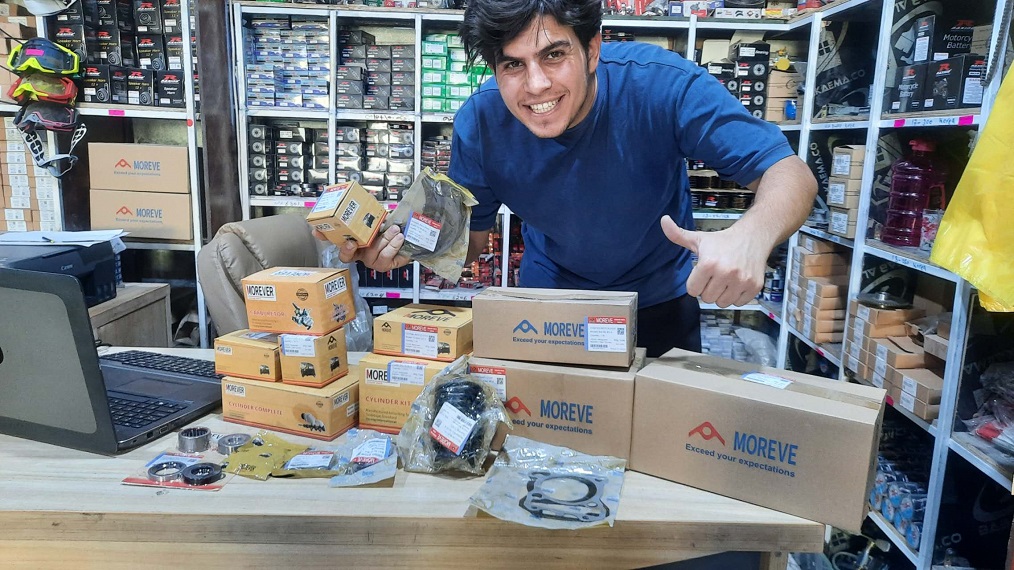
Our Warehouse and Office
